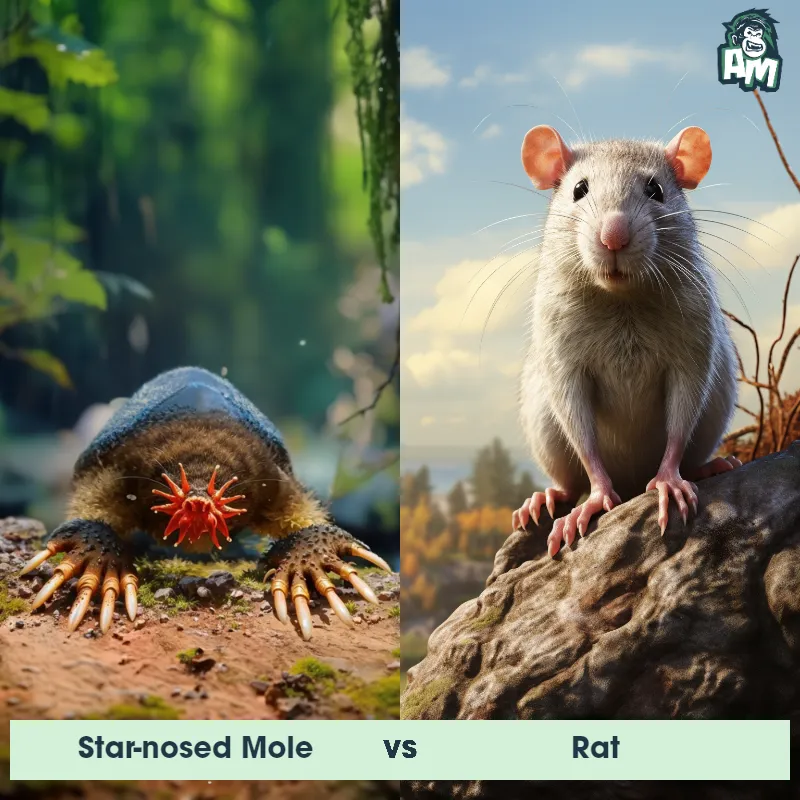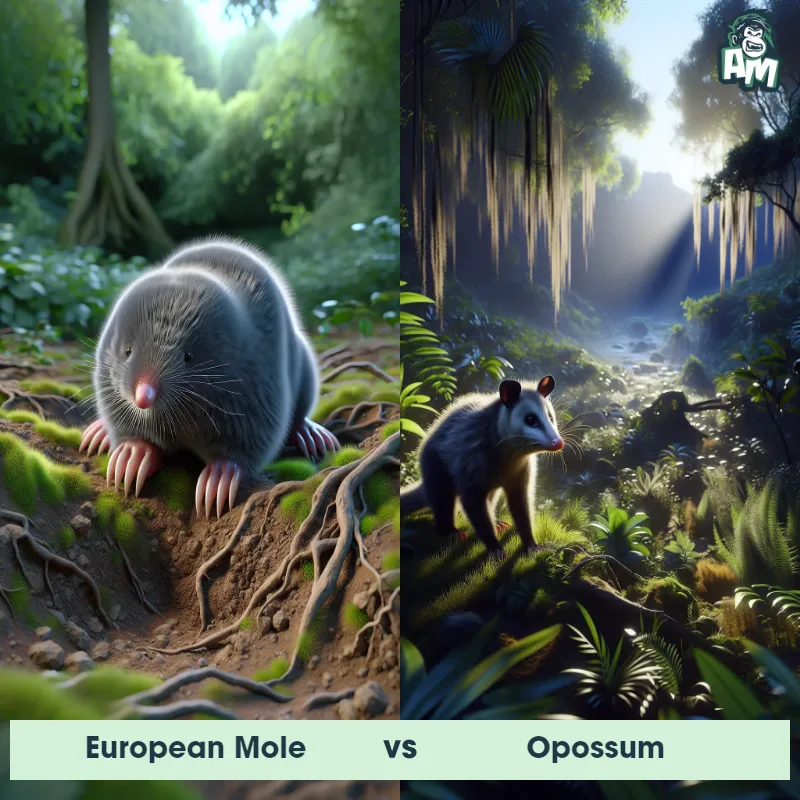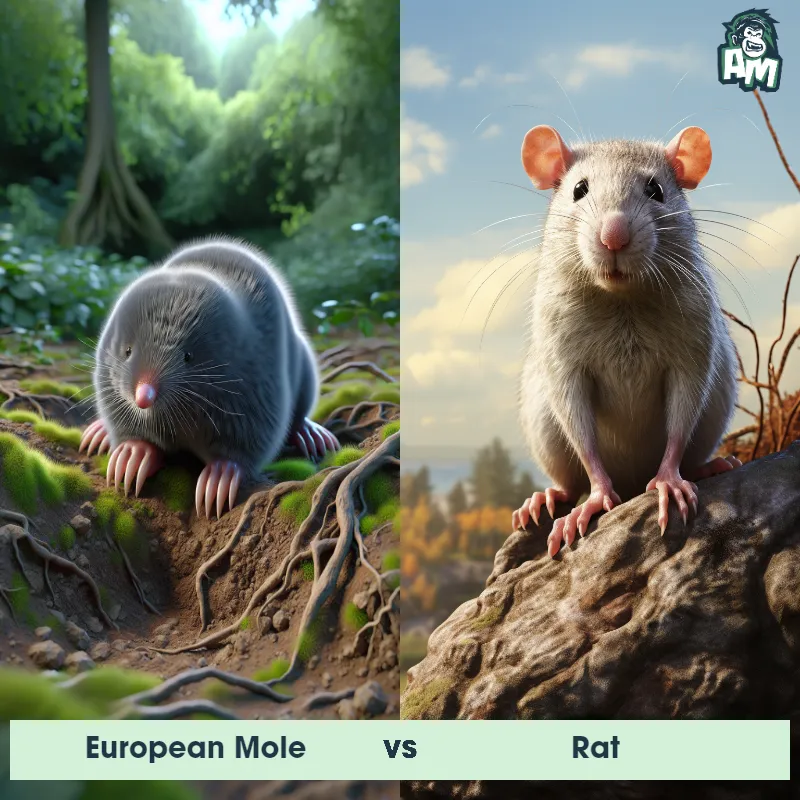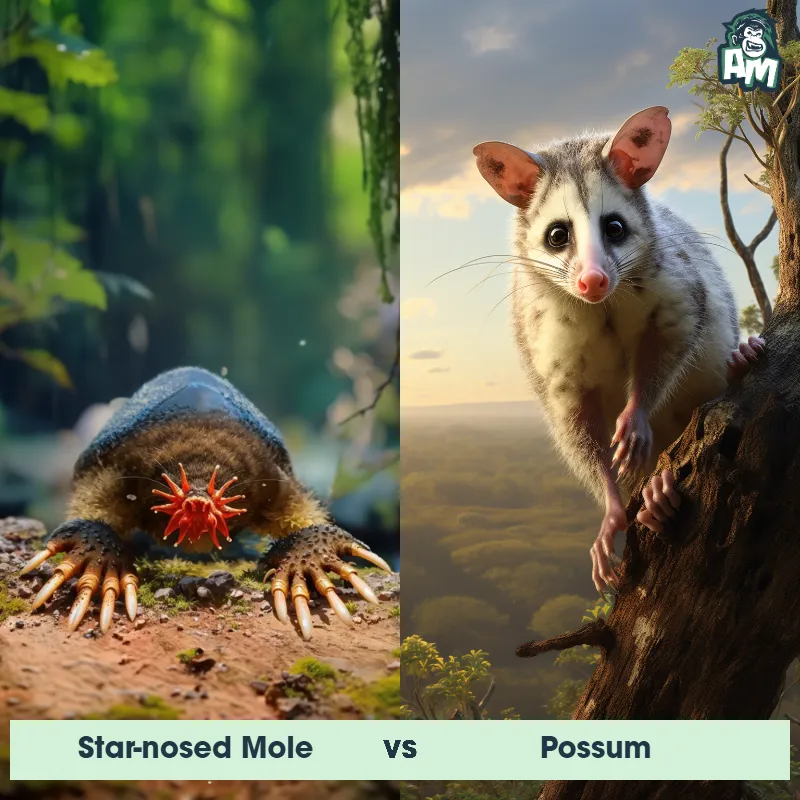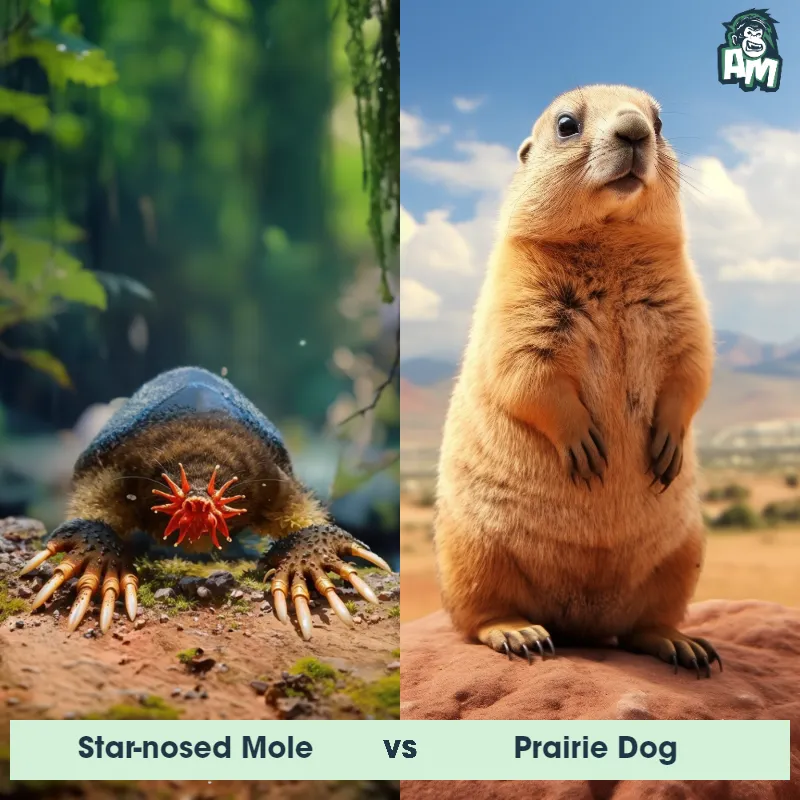European Mole vs Star-Nosed MoleSee Who Wins

Welcome, ladies and gentlemen to the ultimate showdown between two fierce moles - the European Mole and the Star-Nosed Mole. Both competitors are ready to battle it out in a three-round fight to determine who will emerge victorious.
Contender 1: European Mole
The European Mole, scientifically known as Talpa europaea, is a small mammal that belongs to the Talpidae family. These burrowing creatures are typically around 4.3 to 6.7 inches long, with a cylindrical body covered in thick velvety fur that can vary in color from black to grayish-brown. With their sharp claws and streamlined bodies, European Moles are exceptional diggers, creating complex tunnel systems underground. They have sensitive snouts, equipped with whiskers, small eyes that are concealed by fur, and short ears to protect them from debris while burrowing. These nocturnal creatures primarily feed on earthworms and insects.
Fun Fact: The European Mole is a champion of excavation, having the ability to construct networks of intricate underground tunnels spanning a territory of up to 2.5 acres, all achieved through their powerful front limbs and adept digging techniques.
Contender 2: Star-Nosed Mole
The Star-Nosed Mole, scientifically known as Condylura cristata, is a small mammal found in the wetlands of eastern North America. It is easily recognizable by its unique star-shaped nose, which is used to detect prey. The nose consists of 22 pink fleshy appendages known as "rays," each covered in numerous touch-sensitive sensors called Eimer's organs. This extraordinary nose allows the mole to navigate and forage quickly in dark, aquatic environments. The Star-Nosed Mole has a cylindrical body with dense velvety fur, tiny eyes, and shovel-like claws for efficient digging.
Fun Fact: The Star-Nosed Mole possesses one of the most incredible sensory organs, as it can locate and consume prey in less than a quarter of a second!
Matchup Stats
| European Mole | Star-Nosed Mole | |
|---|---|---|
| Size | 4.3 to 6.7 inches (11 to 17 centimeters) | 6-8 inches (15-20 cm) |
| Weight | 2.8 to 4.5 ounces (80 to 130 grams) | 1-2 ounces (30-60 grams) |
| Speed | 0.5mph (0.8km/h) | 3 mph (4.8 km/h) |
| Key Strength | Unknown | Speed and agility |
| Biggest Weakness | Size and physical strength | Lack of physical strength |
Current Votes
European Mole vs Star-Nosed Mole
See Who Wins
View More Matches
Looking For More?
Similar Matches
Scientific Stats
| European Mole | Star-Nosed Mole | |
|---|---|---|
| Scientific Name | Talpa europaea | Condylura cristata |
| Family | Talpidae | Talpidae |
| Habitat | Underground, burrows | Wetlands |
| Geography | Europe, including Great Britain, Scandinavia, and parts of Russia | Eastern North America |
| Diet | Earthworms and insects | Insects, worms, and small invertebrates |
| Lifespan | 3 years - 6 years | 4 years - 6 years |
Key Differences between European Mole and Star-Nosed Mole
- Body shape: The European mole has a cylindrical body with a short tail, while the star-nosed mole has a more compact body shape with a long, thick tail.
- Color: The European mole has a velvety dark brown or black fur, whereas the star-nosed mole has a darker brown fur with a distinctive ring of pink fleshy appendages around its nose.
- Size: The European mole is larger, typically measuring around 6-8 inches in length, while the star-nosed mole is smaller, averaging only 5-7 inches in length.
- Range: The European mole is native to Europe and parts of Asia, while the star-nosed mole is found in eastern North America.
- Eyes: The European mole has small, barely visible eyes, whereas the star-nosed mole has tiny, almost invisible eyes hidden beneath its fur.
- Feet: The European mole has broad, shovel-like front feet adapted for digging, while the star-nosed mole has highly specialized front feet with 22 fleshy appendages used for sensing prey.















